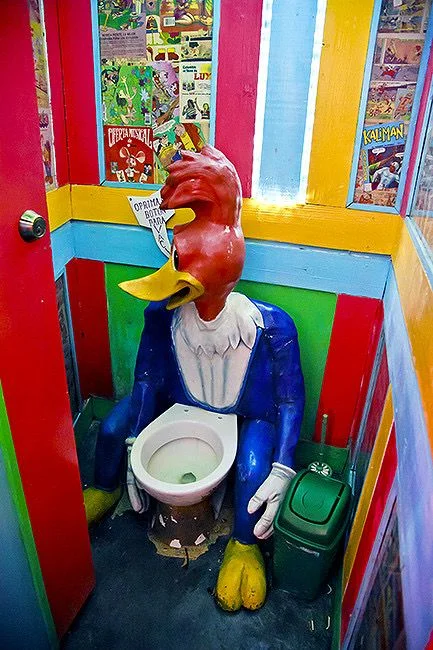In the realm of art and aesthetics, the concept of the “cursed image” has gained traction in recent times. This intriguing phenomenon revolves around images that evoke an unsettling sense of discomfort or eeriness, often defying conventional standards of beauty or harmony. While the origin of this concept can be traced back to internet culture, it has interwoven itself with the modernist artistic approach, creating a fascinating juxtaposition that challenges our perceptions of art, reality, and the human psyche.

The Genesis of Cursed Images: Unveiling the Internet Culture
To comprehend the essence of cursed modernist images, it’s essential to delve into their origins. The term “cursed image” emerged from online communities, particularly on platforms like Reddit and Tumblr, where users began sharing images that sparked feelings of uncanniness, confusion, or dread. These images were typically characterized by an incongruity between elements, a sense of unease emanating from their composition, or an overt defiance of aesthetic norms.
The appeal of cursed images lies in their ability to captivate the viewer’s attention while simultaneously triggering a sense of repulsion. This enigma has been linked to the psychological concept of the uncanny—a Freudian notion that describes something familiar yet foreign, leading to an unsettling response. Cursed images, through their distortion of reality, tap into this psychological phenomenon, leaving viewers simultaneously intrigued and disturbed.
Modernism and its Discontents: A Connection to Cursed Images
Modernism, a revolutionary artistic movement that emerged in the late 19th and early 20th centuries, aimed to break free from traditional artistic norms and create new forms of expression. Artists like Pablo Picasso, Wassily Kandinsky, and Marcel Duchamp sought to challenge the established ideas of beauty, perspective, and reality. This movement birthed abstract art, surrealism, and other avant-garde styles, laying the groundwork for the eventual connection to cursed images.
Cursed modernist images can be seen as an extension of the modernist spirit—an exploration of the boundaries of aesthetics and the human psyche. Just as modernist artists defied conventional artistic norms, cursed images disrupt the expectations we hold for visual harmony. They confront viewers with the unfamiliar, mirroring the modernist approach of presenting new perspectives and interpretations of reality.
The Aesthetics of Unease: Deconstructing Cursed Modernist Images
Cursed modernist images often possess certain aesthetic qualities that contribute to their unsettling nature. These qualities challenge our perception of visual coherence, inviting us to question the nature of beauty itself. One key characteristic is the distortion of proportion and scale. Artists like Salvador Dali pioneered the exploration of distorted realities, and cursed modernist images continue this tradition by warping everyday objects and scenes, leading to an uncanny and jarring effect.
Furthermore, cursed images frequently disrupt the boundaries between organic and inorganic entities. This blurring of distinctions can trigger feelings of discomfort as viewers grapple with the dissolution of familiar categories. Objects that appear to defy their intended purpose or natural state evoke a sense of disorientation, prompting us to reconsider the foundations of our understanding.
The Uncanny Valley and Beyond: The Human Element
In the realm of cursed images, the human form occupies a particularly eerie position. The uncanny valley hypothesis suggests that as humanoid robots or digital avatars become more human-like, there’s a point at which they evoke feelings of eeriness rather than empathy. This phenomenon can also be applied to cursed images, where distorted depictions of the human form trigger a similar unsettling response.
Cursed images frequently incorporate the human body in ways that challenge anatomical accuracy or societal norms. This taps into our subconscious familiarity with the human form while subverting our expectations, leading to a cognitive dissonance that aligns with the uncanny valley concept. In essence, cursed modernist images capitalize on our instinctual recognition of human features, only to warp and distort them, resulting in a deeply unsettling experience.
The Paradoxical Allure: Why Do We Keep Looking?
Despite their disturbing nature, cursed modernist images possess an undeniable allure that keeps viewers coming back for more. This paradox can be attributed to the interplay between curiosity, discomfort, and our intrinsic desire to unravel mysteries. The discomfort that these images evoke is often accompanied by an insatiable need to understand their underlying narrative or meaning. This quest for comprehension can be seen as an extension of the modernist aspiration to challenge and engage the viewer’s intellect.
Moreover, cursed images confront us with the fragility of our own aesthetic judgments. As viewers, we are accustomed to categorizing images as beautiful or ugly, harmonious or discordant. Cursed images blur these lines, prompting us to question the very criteria by which we judge visual compositions. This destabilization of our aesthetic sensibilities challenges us to engage with art in a more complex and nuanced manner.
Conclusion: The Haunting Resonance of Cursed Modernist Images
Cursed modernist images, emerging from the crossroads of internet culture and artistic exploration, exemplify the enduring power of the uncanny and the allure of the unfamiliar. They fuse the disruptive spirit of modernism with the unsettling qualities of the uncanny, leading to an aesthetic experience that defies easy categorization. By challenging our perceptions, invoking discomfort, and captivating our curiosity, these images invite us to contemplate the enigmatic nature of art, reality, and the human psyche. In a world where visual saturation is the norm, cursed modernist images stand as a testament to the enduring capacity of art to surprise, provoke, and haunt us.
